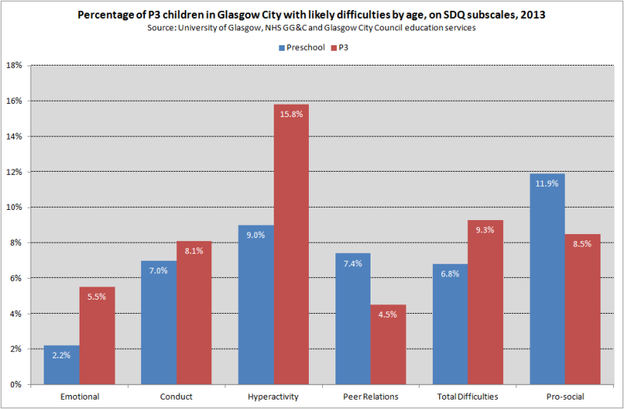Comparison to pre-school
Changes could be seen in the levels of difficulties experienced by children within Glasgow City between preschool and P3. Levels of hyperactivity/inattention rose considerably. An increase in levels of hyperactivity/inattention difficulties would be expected at this age, as children are at their most hyperactive at age seven. However, levels in Glasgow City increased more dramatically than would be expected. Levels of emotional symptoms experienced also increased between nursery and P3. In contrast, difficulties with peer relationships and with pro-social skills, respectively, decreased between nursery and P3.
Notes
SDQ - Goodman’ Strengths and Difficulties Questionnaire (SDQ) is a brief behavioural screening questionnaire for children. It covers five areas: Conduct Problems, Hyperactivity/inattention, Peer Relationship Problems, Emotional Symptoms and Pro-social Behaviours. The first four of these are rated negatively (that is, they pick up difficulties in children). These can be added together to give a Total Difficulties score, which shows an indication of overall difficulties that the child is experiencing. The final area, Pro-social Behaviours, is a positively scored scale, so it shows things the child does e.g. ‘is helpful if someone is hurt or upset’. The Total Difficulties score and the sub-scale scores can be split into groups which indicate whether a child has no difficulties, possible difficulties or likely difficulties.
This analysis reports on results from Pre-school and P3 SDQs in the academic years 2011/12 and 2012/13 combined (data collected in February/March of each academic year). For more information on the study see About the Study.







